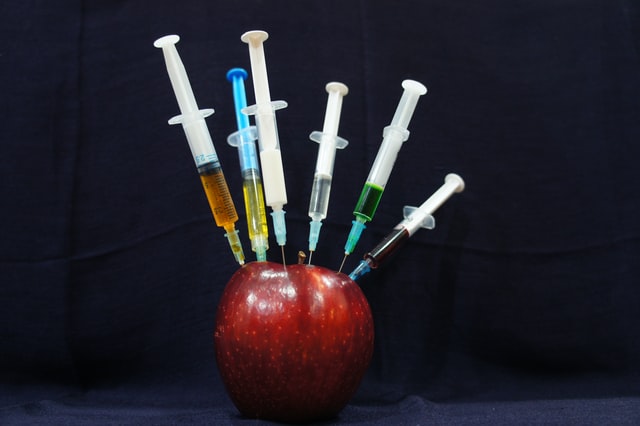Artificial Human Microbiome and Research in Gut Health
As the interconnected relationship between the human gut microbiome and both physical and mental well-being becomes increasingly apparent in recent studies, the limitations of currently available research methods have become glaringly obvious. In order to address this issue, a team of researchers led by Dr. Alice Cheng, a Stanford University gastroenterologist, a specialist in treating illnesses relating to our gastrointestinal tract, has built the very first complex synthetic microbiome.
The Stanford team’s work, published in the scientific journal Cell in September 2022, has revolutionized research in the human gut microbiome, the community of microorganisms existing in our gastrointestinal tract. The way studies in this field have been conducted until now has been with one of two types of sources: natural but unidentified microbe communities such as fecal matter, or incomplete but specific artificially grown microbe communities. Both of these sources have serious limitations, however. While the first type of source is a native environment, much of its matter is unknown, so causal relationships between specific microbes and a specific phenotype, or subsequent observable characteristics, cannot be inferred from studying it. In contrast, the second type is specific enough to infer causation, but it is an oversimplified, unnatural environment so the results cannot be generalized to the human body.
The Stanford team’s work, published in the scientific journal Cell in September 2022, has revolutionized research in the human gut microbiome, the community of microorganisms existing in our gastrointestinal tract. The way studies in this field have been conducted until now has been with one of two types of sources: natural but unidentified microbe communities such as fecal matter, or incomplete but specific artificially grown microbe communities. Both of these sources have serious limitations, however. While the first type of source is a native environment, much of its matter is unknown, so causal relationships between specific microbes and a specific phenotype, or subsequent observable characteristics, cannot be inferred from studying it. In contrast, the second type is specific enough to infer causation, but it is an oversimplified, unnatural environment so the results cannot be generalized to the human body.
Image Source: jarmoluk
The use of a near-native complex microbiome with known materials overcomes both of these limitations and provides additional advantages: all the variables are defined and precise manipulation of the environment is possible, but the model is still complex enough to bear a resemblance to a normal microbial community. Furthermore, it allows for in vivo studies, or studies with live subjects, which enable researchers to investigate issues that could arise in a living organism, such as colonization resistance—when the existing microorganism community rejects the introduction of new microbes.
Dr. Cheng’s team designed the newest version of their artificial microbiome, called hCom2, by transplanting 119 species of microbes prevalently found in large numbers in Western gut communities and into germ-free mice. They tested the new model’s resilience by giving the mice human stool transplants and assessing the state of the microbiome afterward. Not only did the microbial community not die off, it actually consistently remained at stable proportions, even across different mice. The team also began experimenting with leaving certain microbes out to assess how the overall system works and how individual species can affect the whole.
The creation of the hCom2 has opened the door to more specialized research on gut health. Being able to model a gut microbiome in a living organism will especially enable scientists to identify how specific strains of microbes are responsible for microbiome-linked phenotypes. In fact, Dr. Hooper, one of the scientists involved in the research, said that she will be using a synthetic microbiome on her next project to explore how the microbiome influences obesity, and specifically which individual microbes could help or hinder the condition.
Other uses for this new model include more specialized research into better cancer immunotherapy treatments, improved solutions for addressing other issues with diet and nutrition, and even neurodevelopmental disorders.
Dr. Cheng’s team designed the newest version of their artificial microbiome, called hCom2, by transplanting 119 species of microbes prevalently found in large numbers in Western gut communities and into germ-free mice. They tested the new model’s resilience by giving the mice human stool transplants and assessing the state of the microbiome afterward. Not only did the microbial community not die off, it actually consistently remained at stable proportions, even across different mice. The team also began experimenting with leaving certain microbes out to assess how the overall system works and how individual species can affect the whole.
The creation of the hCom2 has opened the door to more specialized research on gut health. Being able to model a gut microbiome in a living organism will especially enable scientists to identify how specific strains of microbes are responsible for microbiome-linked phenotypes. In fact, Dr. Hooper, one of the scientists involved in the research, said that she will be using a synthetic microbiome on her next project to explore how the microbiome influences obesity, and specifically which individual microbes could help or hinder the condition.
Other uses for this new model include more specialized research into better cancer immunotherapy treatments, improved solutions for addressing other issues with diet and nutrition, and even neurodevelopmental disorders.
Featured Image Source: mcmurryjulie
RELATED ARTICLES
|
Vertical Divider
|
Vertical Divider
|
Vertical Divider
|





